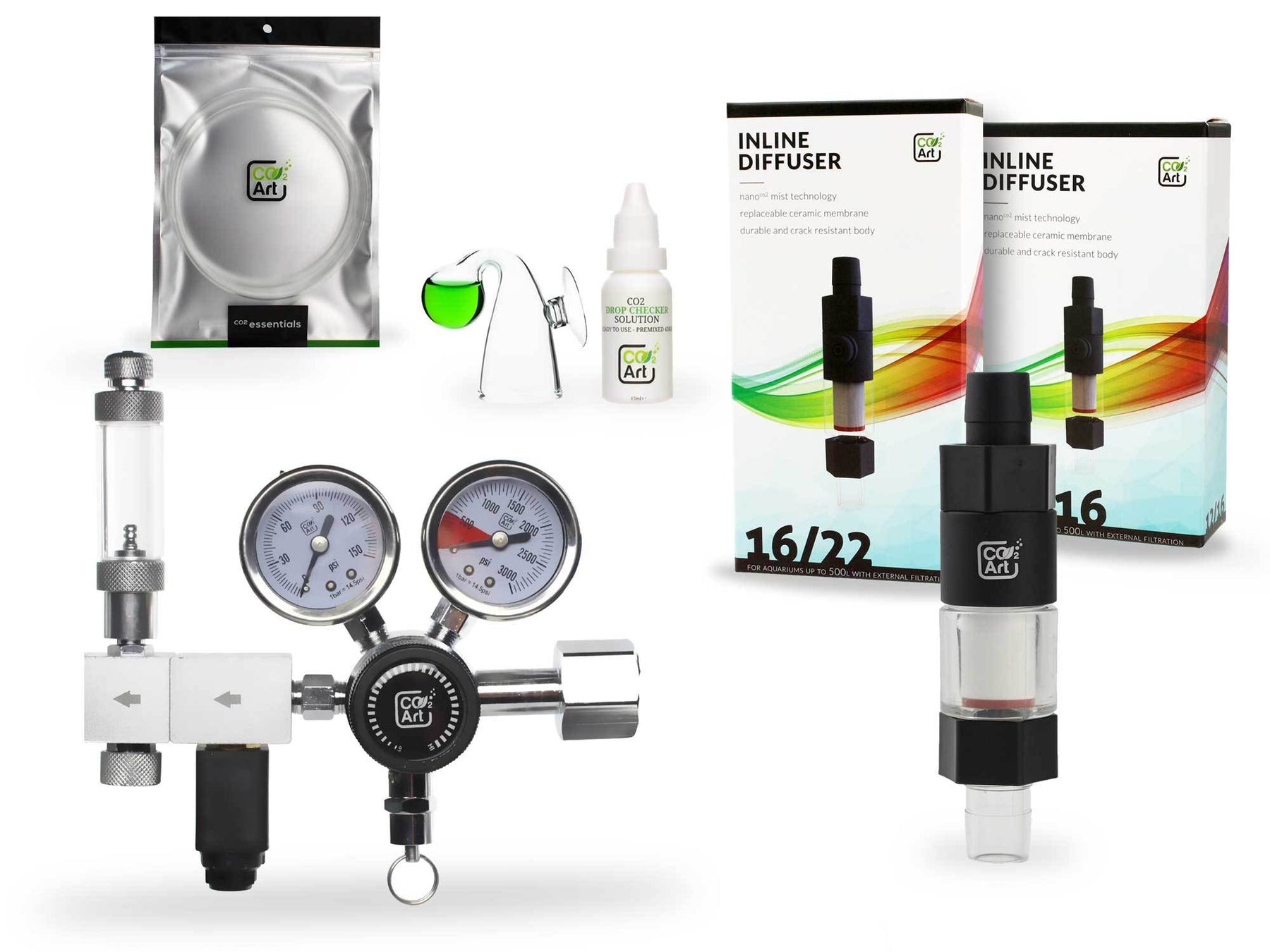Add CO2 to your aquarium: CO2 reactor or diffuser
Why CO2 Matters in Planted Aquariums
Carbon dioxide (CO2) is one of the fundamental building blocks of life for aquatic plants. In nature, flowing streams and decomposing matter constantly supply CO2, but in a closed aquarium system, that supply can quickly fall short. This is why many hobbyists turn to CO2 injection methods like an aquarium CO2 reactor to help maintain healthy plant growth and vibrant aquascapes.
Without enough CO2, even high lighting and nutrients won’t yield lush plants—instead, you may see yellowing leaves or algae taking over. Injecting CO2 ensures that plants can perform efficient photosynthesis, grow robustly, and outcompete nuisance algae. Mastering this balance is key for success in planted tanks.
Understanding the Basics of CO2 Injection
Before choosing a delivery method, it’s important to understand how CO₂ injection works in general. Gas from a pressurised CO2 cylinder is released in controlled amounts and diffused into the aquarium water. The goal is to dissolve CO2 evenly and efficiently, allowing plants to absorb it through their leaves during photosynthesis.
This leads to the common debate: CO2 reactor vs diffuser. Both devices aim to dissolve CO2, but they use different mechanisms and are suited to different types of aquariums. Selecting the right method can significantly influence plant health, efficiency, and even fish comfort.
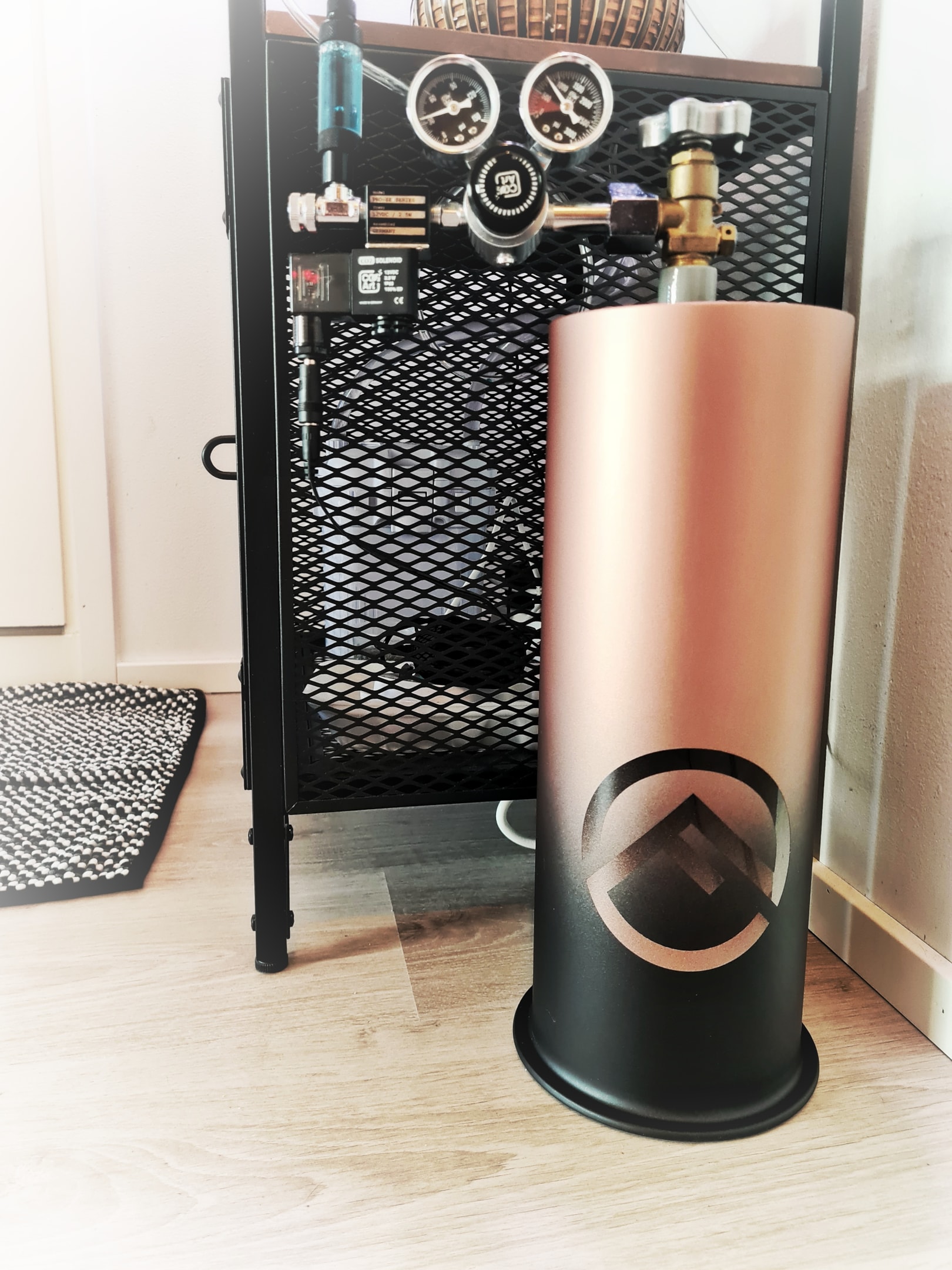
Natural CO2 vs. Injected CO2
Many beginner aquarists wonder whether injected CO2 is necessary at all. While fish respiration and decaying organic matter release trace amounts of CO2, it’s often insufficient for tanks with moderate to high plant demand. Supplementing with a CO2 diffuser for aquarium setups can make a dramatic difference in plant vitality and tank aesthetics.
A diffuser uses fine pores, typically made of ceramic or glass, to create micro bubbles of CO2 that dissolve into the water as they rise. This method is compact, easy to install, and ideal for small to medium aquariums where flow can effectively circulate CO2 throughout the system.
What Is a CO2 Reactor?
A CO2 reactor for aquarium setups is a specialised device that dissolves CO2 into the water more efficiently than standard diffusers. It works by trapping the gas in a chamber where it’s swirled or mixed with water until fully absorbed. This method ensures minimal gas loss and is especially beneficial for bigger tanks or demanding plant setups.
In a CO2 reactor planted tank, this type of system helps achieve consistent CO2 saturation, which supports steady plant growth. Reactors are often installed inline with external filters, making them less visible and more discreet. Their higher capability makes them ideal for aquarists looking for precision and performance.
What Is a CO2 Diffuser?
A CO2 diffuser is a commonly used device in aquascaping that releases CO2 bubbles into the tank in the form of a fine mist, helping aquatic plants absorb carbon dioxide efficiently. Most diffusers use ceramic discs to break the gas into tiny bubbles, which increases the surface area and gives the gas more time to dissolve in the aquarium water before reaching the surface.
Many hobbyists use tank diffusers in smaller or mid-sized aquariums due to their simplicity and visual appeal. The visible bubbles can even act as an indicator that your CO2 injection system is working. However, regular cleaning is essential to prevent clogging of the ceramic discs, which can reduce the device’s performance and consistency.

CO2 Diffuser vs Reactor: Key Differences
When comparing a CO2 diffuser vs reactor, the key difference lies in how they dissolve CO2 into your tank. A diffuser releases mist directly into the water column, providing a visual cue but allowing some gas to escape before dissolving fully. In contrast, a CO2 reactor traps gas inside a chamber where it mixes with water for more complete dissolution—especially useful in high capacity tanks.
The efficiency of a CO2 reactor makes it a better choice for aquarists using a canister filter or managing a high-tech planted tank. On the other hand, a CO2 diffuser is simpler to install and works well with smaller setups. Ultimately, choosing between the two comes down to equipment compatibility, tank size, and the specific needs of your plants.
When to Choose a CO2 Diffuser
A CO2 diffuser is an ideal choice for smaller or medium-sized aquariums where a high-tech setup isn't required. These devices are often preferred in nano tanks or lightly planted aquariums because they are simple to install, easy to monitor, and deliver visible CO2 bubbles that help you quickly gauge the system's activity. A drop checker can be used along side the diffuser to help monitor CO2 injection levels in your tank.
For hobbyists looking to keep their equipment setup minimal and avoid dealing with complex plumbing, tank diffusers offer a convenient solution. They work best when placed under the filter output or in a location with good flow to distribute the mist evenly. While not as efficient as reactors, they still provide adequate CO2 injection for most plants, especially when paired with regular cleaning to prevent buildup in the ceramic discs.
When to Choose a CO2 Reactor
If you're working with larger tanks or a densely planted tank, a CO2 reactor is often the better choice. It connects directly to the canister filter, typically in an inline configuration, and allows the gas to dissolve more completely in water before entering the tank. This minimizes waste and ensures more bubbles are absorbed, especially in high-demand planted aquariums.
The inline reactors are particularly useful for aquascapers who want high CO2 injection efficiency without bubbles clouding the display. While they require a bit more setup and space, often needing to be installed in a cabinet alongside other equipment, the benefits are worth it. Paired with a drop checker, this setup helps maintain optimal CO2 levelsfor plants and keeps algae growth in check.
Placement and Installation Tips
Correct placement of your CO2 diffuser or CO2 reactor is key to ensuring optimal performance in your tank. For tank diffusers, it's best to install them near the filter output or in a zone with strong water circulation to help disperse CO2 bubbles evenly. This allows the fine mist to reach more areas of the aquarium, ensuring your plants receive consistent carbon dioxide.
When using an inline diffuser or inline reactor, connect it to the outflow of your canister filter. This setup keeps the equipment hidden and minimizes visible bubbles in the display. For larger tanks, using inline systems can help maintain consistent CO2 levels without cluttering the aquarium's appearance. Always make sure the filters are strong enough to handle the added resistance of the reactor or diffuser.
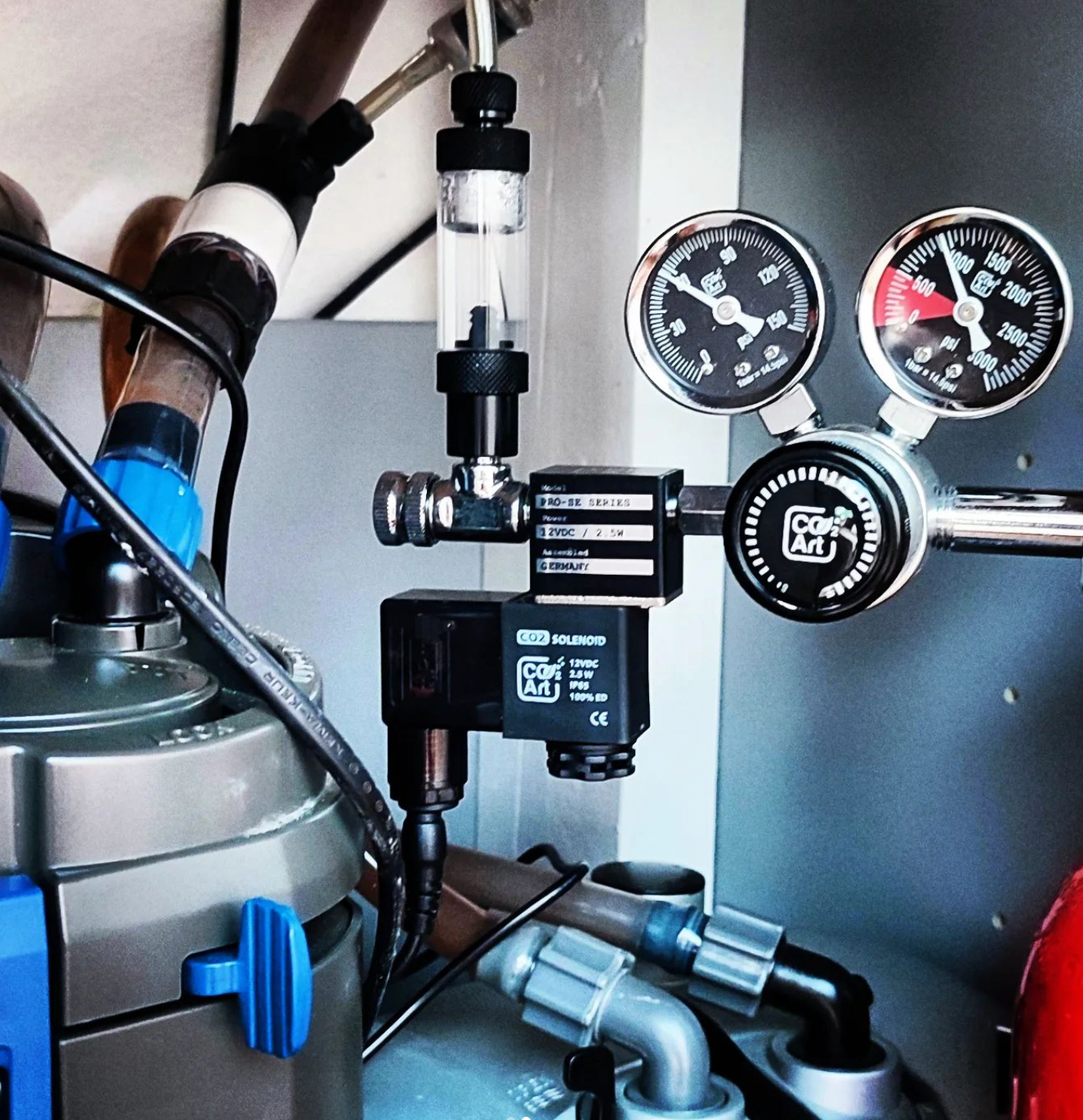
Maintaining CO2 Equipment
Whether you're using a CO2 diffuser or a CO2 reactor, maintenance is crucial to keep your system running efficiently. Regular cleaning of ceramic discs in diffusers prevents clogging, which can reduce the output of fine mist. Soak the discs in a bleach solution and rinse thoroughly to remove buildup. This ensures consistent bubble output and improves overall efficiency.
Inline reactors and filters should also be checked periodically. Over time, debris or algae can accumulate inside, especially if the tank is heavily planted or you have a lot of fish. Inspect tubing, valves, and seals during routine maintenance. Keeping your equipment clean not only improves performance but extends the life of your CO2 injection system. Pair your efforts with a reliable drop checker to confirm that your system stays dialled in.
How to Monitor CO2 Levels Safely
Monitoring CO2 levels in your tank is crucial for maintaining a healthy planted aquarium. A drop checker is the most reliable tool for this purpose. Positioned inside the aquarium, it contains an indicator solution that changes color based on the concentration of dissolved CO2. This visual cue helps you assess whether you're injecting too much or too little CO2, preventing harm to fish and ensuring plants get what they need.
To ensure accuracy, position the drop checker away from the CO2 diffuser or reactor to avoid skewed readings. Make sure the solution is changed regularly and observe it under consistent light conditions. It's also helpful to monitor fish behavior—rapid gill movement or gasping at the surface can signal excessive CO2 dosing. Keeping a steady balance between bubbles and plant uptake is essential for a stable system.
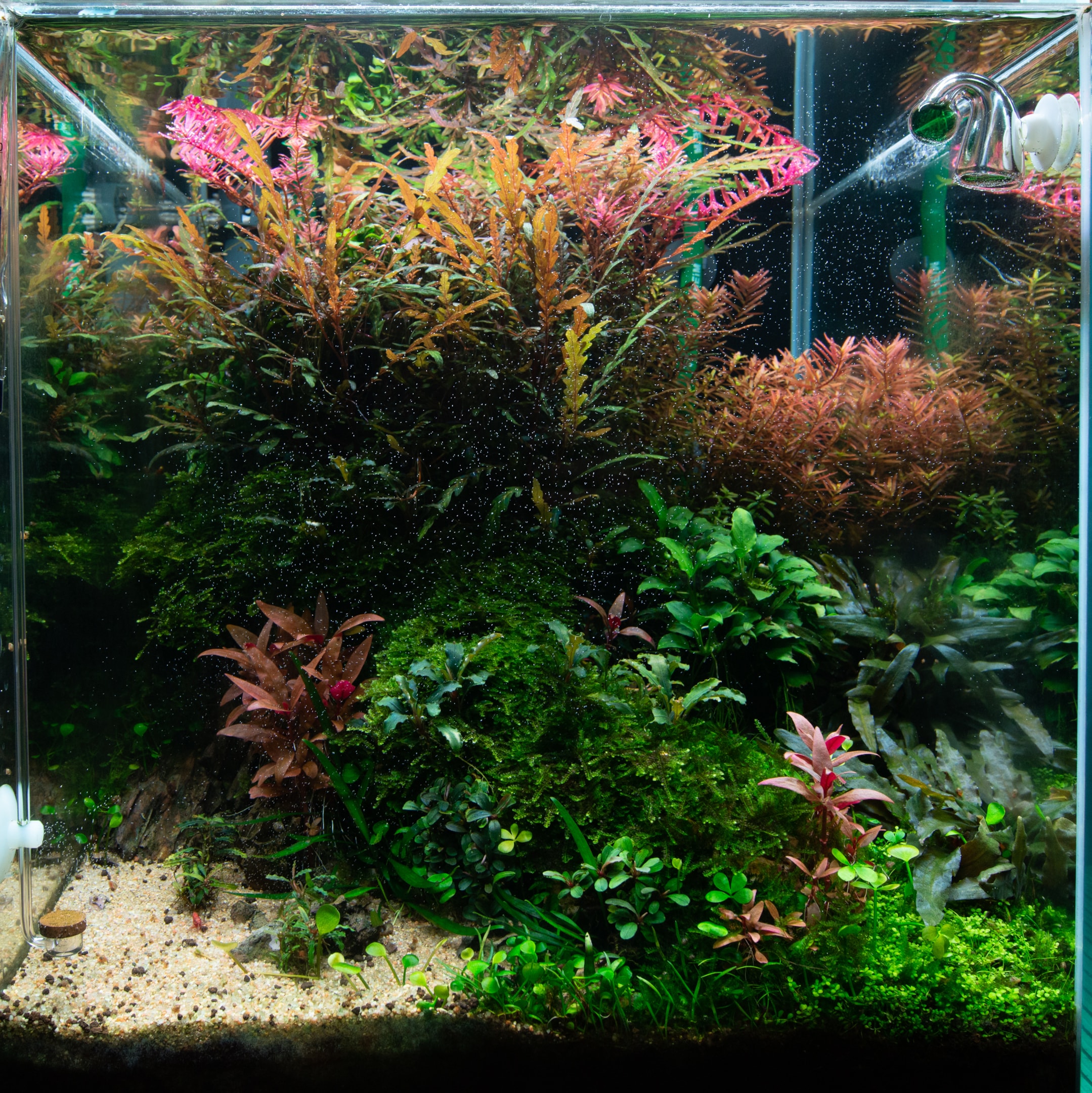
Impact on Fish and Water Parameters
Proper CO2 delivery can greatly benefit your planted tank, but it also influences water parameters that impact fish health. High CO2 levels can lower pH, potentially stressing or harming fish if not monitored. Sudden swings in CO2 bubbles or bubbles production can also cause erratic tank conditions, especially in smaller aquariums.
Fish may display signs of stress—like lethargy or unusual swimming patterns—if CO2 levels are too high. That's why using a drop checker and observing your fish daily is important. In addition, be mindful of how CO2 affects filters, as excessive gas buildup in canister systems can reduce water flow. A stable aquarium environment depends on balancing the needs of both your plants and fish.
Combining CO2 with Lighting and Fertilisers
For a successful planted tank, CO2 is just one element of a well-balanced setup. Pairing CO2 introduction with consistent light and appropriate fertiliser dosing supports optimal plant health. Without enough light, plants can’t utilize the injected CO2, resulting in wasted CO2 bubbles and uneven nutrient use. Additionally, a lack of synchrony can lead to excess nutrients that disrupt the flow of the system and encourage algae growth.
The key is balance. Start CO2 about 30 minutes before the lights come on to match the plant’s active period. This ensures a steady flow of carbon during photosynthesis. Fertilisers must also be dosed accurately to prevent deficiencies and keep the biological flow of nutrients consistent. With proper maintenance, this creates a stable and productive tank environment for both plants and fish.
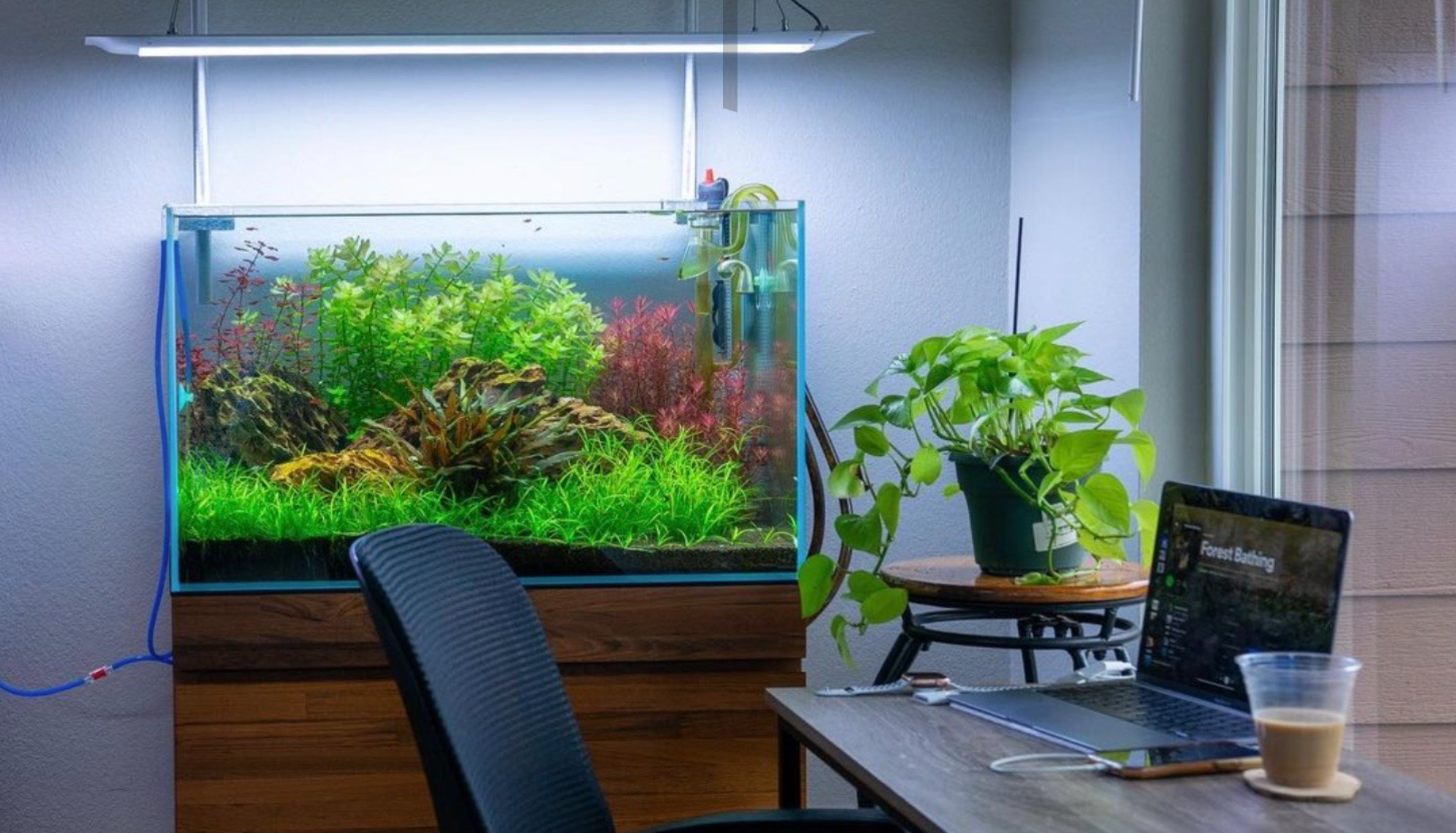
Choosing the Right Option for Your Aquarium Goals
Selecting between a CO2 diffuser and a CO2 reactor depends on your aquarium's size, your plants' needs, and your comfort with equipment. Larger tanks often benefit from inline reactors, which provide a smoother flow and more complete gas dissolution, reducing visible bubbles. Smaller tanks, on the other hand, may be better suited to tank diffusers with ceramic discs that are simple to use and easy to clean.
If you aim for a high-tech aquascape with demanding live plants, a canister filter paired with an inline reactor will help maintain stable CO2 levels without disrupting your tank’s flow. Lower-maintenance setups can still thrive with a diffuser and regular upkeep. Aligning your equipment choices with your goals ensures long-term satisfaction and healthy plant growth in your aquarium.
Meet our bestseller! The Pro-Elite Series Complete Aquarium CO2 System with New Inline CO2 Diffuser!
